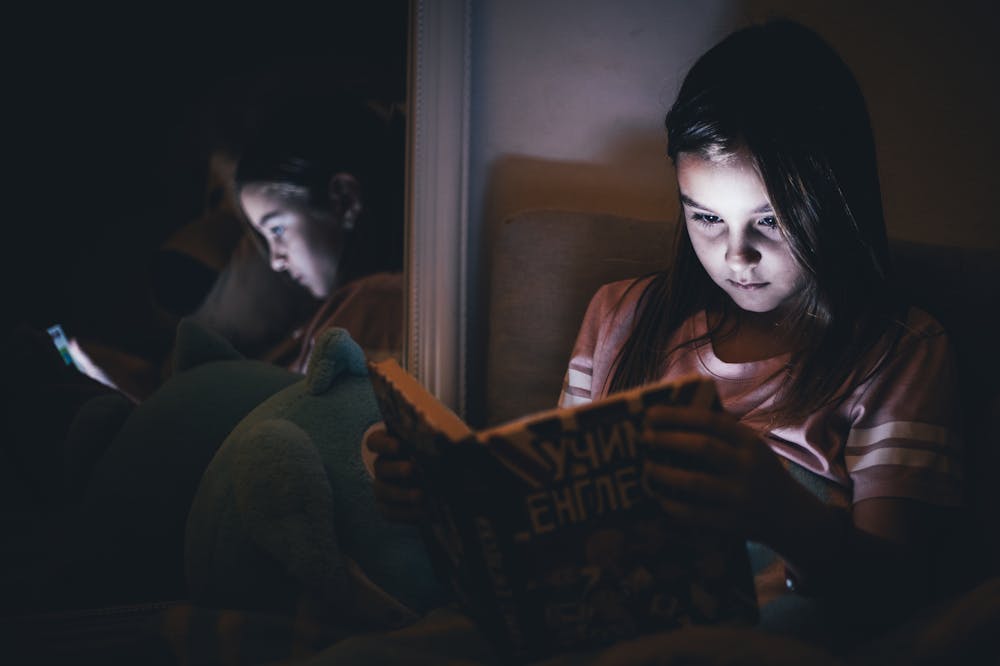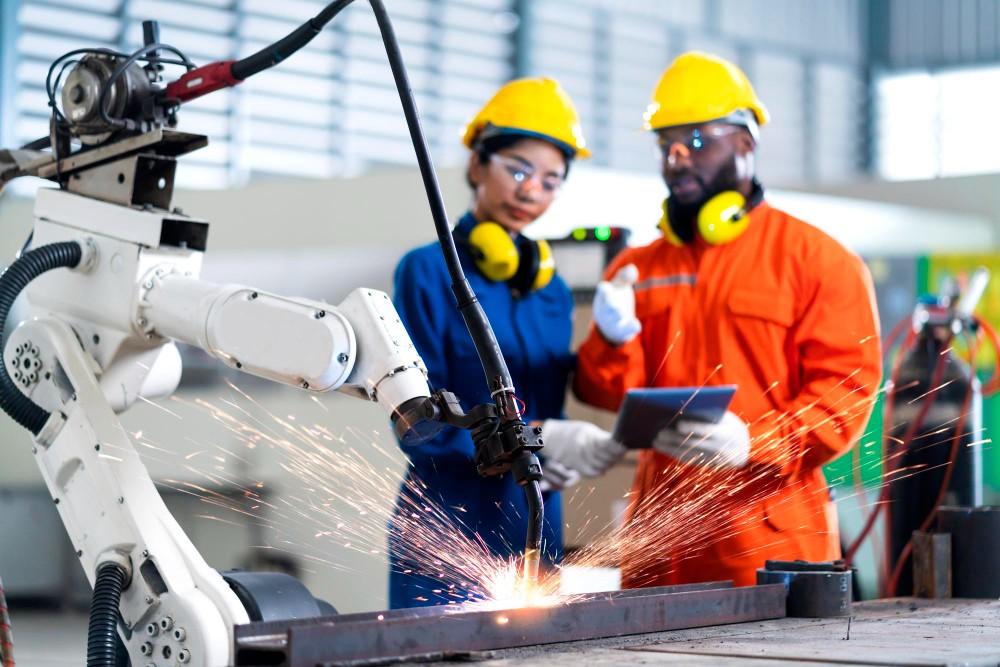
“The real problem is not whether machines think, but whether men do.”
B. F. Skinner
AI anxiety hit me at 2a.m. on a Wednesday, scrolling through Twitter [X] in bed like a responsible adult.
Someone had posted a video of an AI generating a complete marketing campaign—headlines, body copy, visuals, strategy—in under three minutes. The kind of work that used to take me a week to complete.
I felt my chest tighten. My hands went cold. And then came the thought that’s been keeping millions of people awake at night: What if everything I’ve spent years learning to do is about to become worthless?
That’s AI anxiety in a nutshell. It’s that weird knot in your stomach every time a new “revolutionary” update drops and you wonder if you just became obsolete overnight.
You scroll through LinkedIn, and suddenly everyone’s an “AI productivity coach,” writing code, music, and love letters with the same app you barely figured out how to prompt. You tell yourself it’s fine — but deep down, your brain’s whispering, “Are we still relevant?”
Spoiler alert: you’re not alone.
This is AI anxiety—and here’s how it rewires your mind, and more importantly, how to stop it from running the show.
A 2023 Pew Research study found that 52% of American workers feel AI will significantly impact their work within the next decade. Meanwhile, Google search interest for “AI anxiety” has more than doubled since ChatGPT’s launch in late 2022, spiking again with each major model release in 2024.

The world’s collectively asking: what happens to humans when machines start thinking faster than us?
AI anxiety doesn’t usually show up as full-blown panic attacks. It hides under subtle habits — doomscrolling AI headlines, comparing yourself to people who “leverage automation better,” or avoiding learning tools you secretly fear will replace you.
Our brains are wired for stability — not exponential change. According to the American Psychological Association, rapid technological shifts trigger “technostress” — the mental strain caused by our inability to cope with rapid technological change.
So, why does AI anxiety feel so visceral — like it’s wired into our bones?
Blame the amygdala, that ancient almond-shaped chunk of brain matter built to detect danger. When you read a headline claiming “AI will displace 300 million jobs globally by 2030” (a widely cited Goldman Sachs estimate), your amygdala lights up like a Christmas tree.
Our minds weren’t designed for this much uncertainty. Humans crave predictability—it’s how we conserve mental energy. AI breaks that rule by rewriting what’s “normal” every few months.
Even if your rational brain knows it’s more nuanced than that, your nervous system reacts as if you’ve just spotted a predator. Except this predator has better grammar than you and never needs coffee breaks.
There’s also status anxiety, a term philosopher Alain de Botton coined to describe our fear of losing social worth. For millennia, our survival hinged on being useful to the tribe.

In today’s version, being replaced by an algorithm doesn’t just threaten your paycheck — it threatens your identity. It’s the modern form of social exile: irrelevant in a world that’s moving faster than you can update your résumé.
Let’s be honest: you’re not scared of AI. You’re scared you won’t keep up. That’s not an insult — it is biology mixed with ego and a dash of imposter syndrome.
Psychologists call it the illusion of control — the comforting belief that we can manage everything happening around us. When AI starts producing artwork, diagnosing diseases, or analyzing data faster than we can blink, that illusion shatters.
And we don’t handle it well.
Evolution trained us to equate rapid change with danger. For prehistoric humans, change meant drought, famine, or a new predator on the block. Adaptation wasn’t optional — it was survival.
Fast forward to now, and “change” just means yet another platform update you didn’t ask for. But your brain still treats it like a life-or-death scenario because, evolutionarily speaking, it was.
When your entire sense of self is built on “I’m good at X,” and suddenly AI can do X faster, cheaper, and arguably better… who are you?
That’s not AI anxiety. That’s existential crisis.
I see this in my hypnotherapy practice constantly. People come in saying they’re anxious about AI taking their jobs. But when we dig into what’s really going on subconsciously, it’s never just about employment. It’s:
“If I’m not a writer, who am I?”
“If my skills are worthless, what’s my purpose?”
“If AI can do what I spent ten years learning, what was the point of any of it?”
AI anxiety is grief. Grief for a future you thought you’d have. Grief for an identity you thought was secure. Grief for the belief that hard work and skill development would protect you.

Here’s what makes this different from every previous technological revolution: The blacksmiths of the Industrial Revolution knew they were losing their livelihood. But they didn’t wonder if they’d become obsolete as humans.
They were still fathers, brothers, community members, people with inherent worth beyond their profession. We do wonder. Because we’ve been taught our entire lives that our value is in our productivity. In what we can create, accomplish, and earn.
And now that productivity is being commoditized by algorithms. The uncomfortable question AI is forcing all of us to confront is this:
That’s terrifying. That’s why people are spiraling. Not because of the technology itself, but because of what it’s forcing us to face about ourselves.
And the media? They’ve figured out exactly how to exploit that fear.
If you believed every AI headline, you’d think your toaster was three updates away from world domination. Media thrives on uncertainty.
“AI will steal your job by 2027!” makes more clicks than “AI might change some industries, but most people will adapt.”
Fear sells. It drives engagement, which drives revenue. The attention economy, as explained by Tristan Harris from the Center for Humane Technology, rewards outrage and panic because they keep us scrolling.
But here’s what doesn’t make headlines: AI creates jobs, too. According to MIT Technology Review, automation historically shifts labor rather than erases it. For every industry it disrupts, new ones emerge—data trainers, AI ethicists, prompt engineers, creative directors.

The uncomfortable nuance? Those new jobs might not be for the same people in the same industries. A coal miner isn’t becoming an AI prompt engineer overnight.
That’s the hard truth no one wants to say out loud because it doesn’t fit neatly into a LinkedIn inspirational post.
Still, the constant exposure to “doom content” keeps our nervous systems in overdrive.
According to the Center for Humane Technology, social media algorithms are designed to reward emotional engagement—and fear is the most clickable emotion of all.
That’s the dopamine-fear cycle: you get stressed, you scroll for answers, and the platforms feed you more of what stresses you out because your engagement metrics are absolutely perfect. As media scholar danah boyd observed:
“What we fear most is rarely what actually happens. But the gap between fear and reality is where misinformation thrives.”
So, next time you see a headline about AI “ending humanity,” remember—it’s not journalism. It’s engagement optimization with a fear-mongering business model.
Your brain learns through repetition. When you repeatedly expose yourself to fear-driven content, your neural pathways strengthen that association.
In neuroscience, this is fear conditioning — the same process used in lab experiments to make mice freeze when they hear a certain tone. Except now, your tone is “AI update trending on X.”
Chronic exposure to anxiety-inducing stimuli raises cortisol levels, messes with sleep, and trains your brain to stay on high alert. According to Dr. Andrew Huberman, constant digital threat perception keeps your body in a semi-activated “fight-or-flight” state, making it harder to focus or feel motivated.

This is why tech burnout feels like emotional jet lag. You’re not just tired — your brain’s reward system is out of sync.
The good news? Fear conditioning works both ways. Just as your brain learned to panic at every AI headline, it can learn to respond with curiosity instead. You’re literally the developer and the software.
When you deliberately engage with balanced information—or better yet, step away from the noise—you start rewriting the code. In short: AI anxiety can be unlearned.
This is why the steps below aren’t just productivity hacks—they’re neural reprogramming. Each one interrupts the fear conditioning loop and builds new pathways. You’re literally debugging your own operating system.
Important caveat: if anxiety significantly impairs your daily functioning, skip the DIY approach and talk to a mental health professional. Sometimes we need expert help to debug the system.
This is where we stop spiraling and start actually doing something useful. Label what’s happening. Say it out loud—“This is AI anxiety.”
Once you identify fear, it stops operating in the shadows like some psychological ninja. Neuroscience shows that simply naming an emotion reduces its intensity by engaging your prefrontal cortex.
It’s like emotional debugging.
Unfollow doom accounts. Mute keywords like “AI apocalypse” and “robots taking over.”
Subscribe to balanced thinkers—people like Ethan Mollick (Wharton professor studying AI’s practical impact) or publications like OneUsefulThing that discuss AI with nuance, not hysteria.
Think of it as switching from junk food to actual nutrition. Your brain will thank you.

You don’t have to “beat” AI—you need to collaborate with it. Treat it like a power tool, not a rival threatening your existence.
Take Sarah, a 48-year-old marketing director who spent six months paralyzed by AI fear. Then she spent one weekend learning how to use AI for market research.
Her insight? “AI doesn’t replace my judgment—it handles the grunt work so I can focus on strategy. It’s like having an intern who never sleeps and doesn’t steal my lunch from the office fridge.”
Skill adaptation isn’t a race; it’s a relationship. And like any relationship, it requires curiosity, patience, and accepting that you’ll occasionally have no idea what’s happening.
Digital breaks aren’t luxuries; they’re essential maintenance. Go analog—read physical books, take walks without your phone, and practice box breathing (4 seconds in, 4 hold, 4 out, 4 hold).
Research from Stanford Compassion Lab found that simple mindfulness breaks reduce cortisol by up to 25% in tech workers.
You can’t think clearly about the future when your nervous system is stuck in threat mode, scanning every notification like it’s a potential predator.
Your body doesn’t know the difference between a lion and a LinkedIn notification. Teach it.
Every major tech leap—from the printing press to electricity to the internet—created massive anxiety about job loss and social upheaval. Every. Single. Time.
Scribes thought books would destroy their profession. Factory workers feared electricity. Secretaries panicked about computers.
Humanity adapted. We created more opportunities than were destroyed.
According to McKinsey’s 2023 report—take it with a grain of salt, but the trend holds—63% of workers will see AI enhance rather than replace their roles, primarily by automating routine tasks and freeing humans for higher-value work.

The robots aren’t coming for your job; they’re coming for your spreadsheets, your data entry, and your soul-crushing repetitive tasks.
The question is, what will you do with the time you get back?
Sure, AI can outwork you, outthink you, and maybe even outwrite you. But can it feel existential dread on a Monday morning? Didn’t think so. That chaotic, emotional mess inside you — that’s still your edge.
At its core, AI anxiety forces us to confront a deeper question: what makes us human? The truth is, our value has never been about raw output. It’s about insight. Creativity. Compassion.
The ability to connect dots across domains that machines can’t even perceive.
AI can replicate intelligence—pattern recognition, data processing, even artistic styles—but not consciousness, empathy, ethical judgment, or the ability to find meaning in chaos.
AI can write a poem, but it doesn’t know what it feels like to have your heart broken at 3 a.m. It can generate a business strategy, but it doesn’t understand the human dynamics that make or break a team.
It can analyze data, but it can’t decide what’s worth analyzing in the first place.
Viktor Frankl, who survived Nazi concentration camps and went on to found logotherapy, wrote:
“Between stimulus and response, there is a space. In that space is our power to choose our response.”
That’s the space AI can’t touch—your ability to choose who you become amidst change, to find meaning in uncertainty, and to respond with wisdom rather than react with fear.
AI will keep evolving. It will get faster, smarter, and more capable. That’s a given.
But your response to that evolution? That’s entirely within your control.
The world won’t slow down for your comfort. But your mind can learn to move with it instead of against it. AI anxiety isn’t a sign you’re falling behind—it’s proof that you’re paying attention. That you care enough to question where we’re heading.
The key is not letting that awareness curdle into paralysis or metastasize into 2 a.m. Twitter [X] doom spirals.
Use it. Channel it. Let curiosity replace dread.
Because the future doesn’t belong to the people who panic fastest. It belongs to those who adapt best.
And adaptation isn’t about being fearless. It’s about being afraid and showing up anyway—armed with better information, a healthier mindset, and maybe a decent sense of humor about the whole absurd situation.
The robots aren’t coming for your humanity. But fear will if you let it.
DISCLOSURE: In my article, I’ve mentioned a few products and services, all in a valiant attempt to turbocharge your life. Some of them are affiliate links. This is basically my not-so-secret way of saying, “Hey, be a superhero and click on these links.” When you joyfully tap and spend, I’ll be showered with some shiny coins, and the best part? It won’t cost you an extra dime, not even a single chocolate chip. Your kind support through these affiliate escapades ensures I can keep publishing these useful (and did I mention free?) articles for you in the future.
Like this article? Then you might want to read this:
READ NEXT